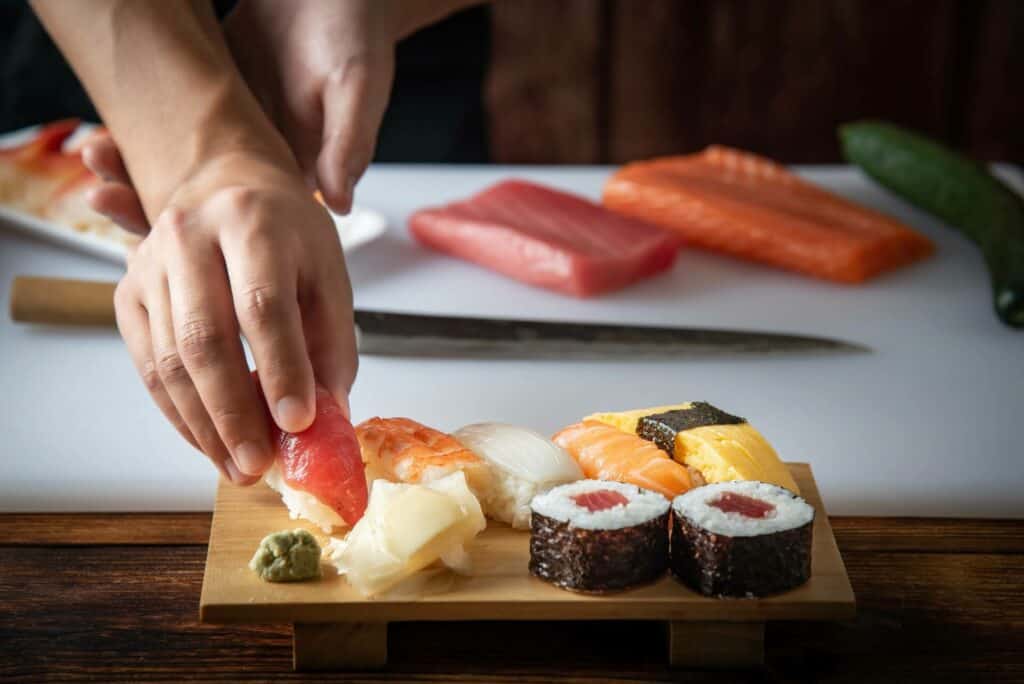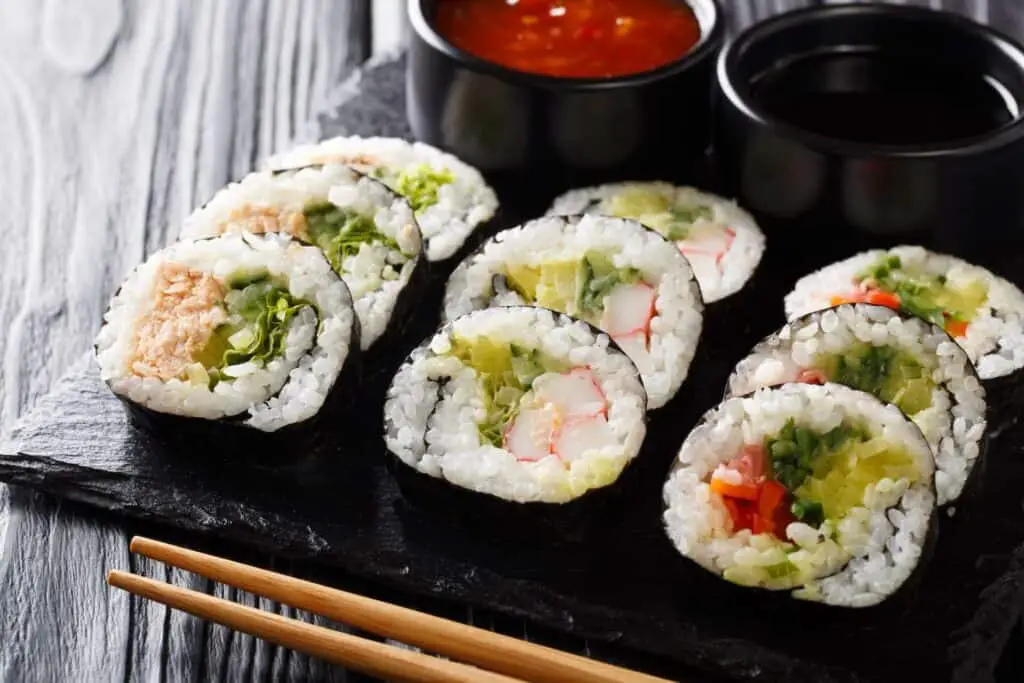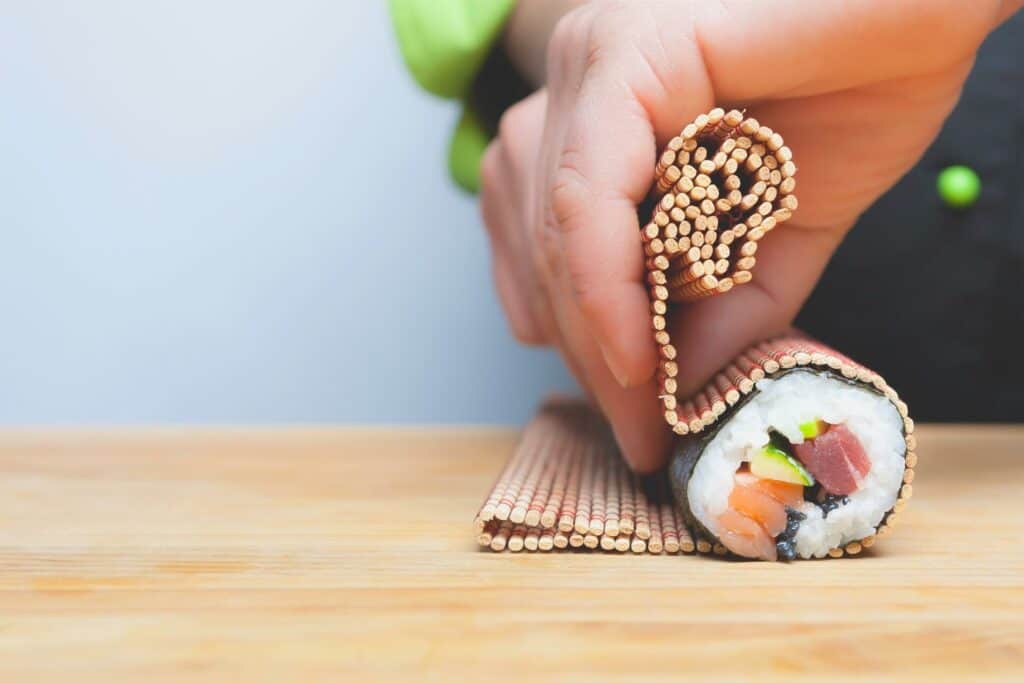If you’re gathering the courage to try and make sushi by yourself, you need to know which rice can be used so you can get the right taste and texture. Being one of the most popular rice varieties in the States, many wonder – Can you use Calrose rice for sushi?
Yes, you can use Calrose rice for sushi, and you should if Japanese short-grain rice isn’t an option. Calrose is medium-grain rice and has a similar taste and texture to Japanese rice. Cultivated in California, it’s one of the best Western alternatives to original Japanese sushi recipes.


If you want to find out more about Calrose rice and how to make it perfect for sushi, here you can read all you need to know.
Yes, You Can Use Calrose Rice for Making Sushi
Traditionally, sushi is made from Japanese short-grain sushi rice, but today many Western households use Calrose rice as a suitable alternative. However, keep in mind that Japanese and Calrose rice are not the same kinds, although many don’t make this difference.
Calrose rice is medium-grained rice high in amylopectin. This scratch gelatinizes during the cooking process, making this rice sticky after being cooked. Remember that the level of stickiness is an essential factor when choosing suitable rice for sushi.
Whether you want to make maki, uramaki, temaki, or nigiri, you need to use rice grains that clump together and are easy to shape. Although Calrose rice is less sticky than the Japanese one, it’s still sticky enough to make your sushi look perfect and taste delicious. Keep in mind that these grains have a soft texture and mild flavor that combines well with other typical (or even atypical) sushi ingredients.
Wondering if Botan rice is good for sushi? Find out by reading my article.
Origin of Calrose Rice
Calrose rice is a relatively new variety. California farmers started growing it in the middle of the last century – hence the first three letters of its name. Today it represents more than 80% of California’s total rice production. Although there are plenty of different Calrose rice brands, Botan is the most popular on the market.
At the same time, this California-grown rice is a kind primarily used in Japanese restaurants all over the States (according to California Rice Commission). Therefore, next time you go for sushi, it is most likely that the rice you’ll be tasting will be Calrose type.
Calrose rice was even considered exotic in some parts of Asia and very sought-after. It resulted in it becoming one of the products that were smuggled and sold on the black market.

Differences and Similarities Between Japanese Sushi and Botan Calrose Rice
Japanese sushi rice is one of the most popular types in Japan, used for a variety of dishes, not only sushi. It’s short-grained with an even higher amount of amylopectin, making rice clump even better than with Calrose. The most common types of short-grain Japanese rice used for sushi are:
- Koshihikari,
- Sasanishiki,
- Hatsushimo.
Although people often use the terms Japanese sushi and Calrose rice as synonyms, they are not the same kind. Take a look at the table below to spot some of the subtle differences.
| Characteristics | Japanese sushi rice | Calrose |
| Land of origin | Japan | California |
| Type of grain | Small-grained | Medium-grained |
| Level of stickiness | Very sticky | Slightly sticky |
| Preparation process | Rinsing and soaking | Rinsing and soaking |
| Rice to water ratio | 1:1.3 | 1:1 |
| Cooking time | 12 minutes on low temperature after the water begins to boil | 18-20 minutes on low temperature after the water begins to boil |
Japanese White Rice vs. Calrose Rice – Which Is Better Sushi Ingredient?
When looking for the best rice for sushi, there is no question that original Japanese rice is the better choice. All additional amylopectin simply makes Japanese short-grain rice easy to work with and provides you with the texture and flavor inherent to traditional Japanese cuisine.
Should You Use Botan Calrose Rice Over Basmati and Jasmine?
However, it’s no mistake to use Calrose rice instead of the original Japanese one – just the opposite. When you can’t work with koshihikari, sasanishiki, or hatsushimo, Calrose is your next best alternative. Although medium-grained, Calrose is a much better choice than basmati and jasmine rice.
Neither jasmine nor basmati rice has Japanese origin (they were first grown in India, Pakistan, or Thailand), but that is not the main reason they should be avoided in this Japanese delicacy. Opposed to Japanese short-grain sushi rice and California Calrose, both of these rice varieties are low in amylopectin. Cooked, they are much drier and firmer – not soft and sticky as sushi rice needs to be.

How to Cook Calrose Rice for Sushi?
So your Calrose rice gets the perfect texture for your future sushi masterpiece, make sure you follow the nest steps when preparing it in a rice cooker:
- Use a colander to rinse the grains until the water becomes completely clear,
- Let them drain for about one hour,
- Cook,
- Prepare rice vinegar, sugar, and salt mix for authentic sushi rice flavor,
- Cook it until all sugar is dissolved, but remove it before the mixture boils,
- Let it cool down at room temperature,
- When the rice is ready, spread the grains on the baking sheet,
- Pour vinegar mixture over it,
- Let it cool down and flip it periodically,
- Use the rice when it is cold.
Calrose Rice Is the Best Western Alternative
Calrose rice has much wider usage than just for sushi – as a side dish, in different soups, salads, and many other meals. However, its mild flavor and sticky and creamy texture made it the perfect sushi ingredient. An excellent alternative to Japanese short-grain varieties traditionally used for all kinds of sushi dishes, it is also a great choice for those looking for local products made inside the country’s borders.